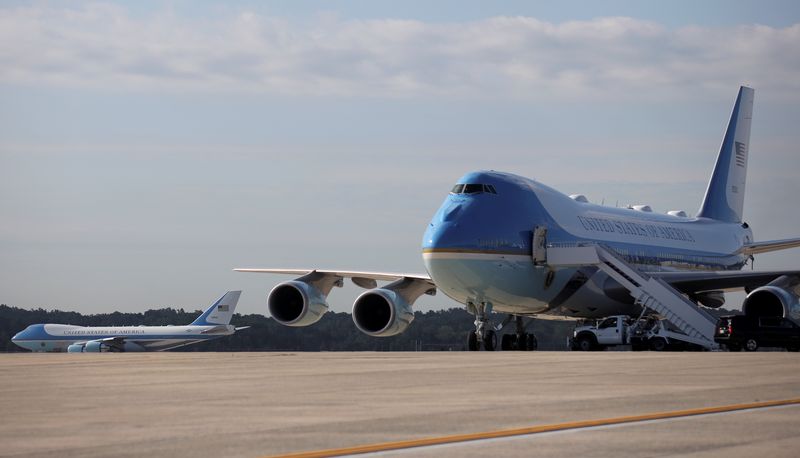By David Shepardson and Mike Stone
WASHINGTON (Reuters) -The Biden administration will scrap a paint scheme for Air Force One proposed by former President Donald Trump, after the Air Force determined the design would create too much heat for the presidential aircraft, a U.S. official said on Friday.
The current exterior color scheme on the presidential aircraft, known as Air Force One when the president is on board, is white with two shades of blue and dates back to President John F. Kennedy's administration.
Trump, who left office in January 2021, wanted to change it to red, white and blue.
"The Trump paint scheme is not being considered because it could drive additional engineering, time and cost," an administration official said on condition of anonymity.
The Air Force did not immediately comment.
A spokesman for Trump, Taylor Budowich, criticized the decision and said, "it's no surprise (Biden) wants to remove the beautiful red, white, and blue design for Air Force One."
On Wednesday, an Air Force spokeswoman said darker colors, among other factors, on the underside of Air Force One "might contribute to temperatures exceeding the current qualification limits of a small number of components."
In 2018, Boeing (NYSE:BA) Co received a $3.9 billion contract to build two 747-8 aircraft for use as Air Force One by the U.S. president, due to be delivered by December 2024. Boeing is heavily modifying a pair of 747s for the project.
The Pentagon said this year that the planes are not likely to be delivered until 2026.
A Boeing spokesperson said it was making progress, "while navigating through some challenges."
The Boeing 747-8s are designed to be an airborne White House able to fly in worst-case security scenarios, such as nuclear war, and are modified with military avionics, advanced communications and a self-defense system.
Earlier this week, a government watchdog said the planes face further delay risks because of a tight labor market for mechanics and lower-than-expected security clearance rates.

The need for Boeing to switch to an alternative supplier for some interior work was also cited by the U.S. Government Accountability Office (GAO) as a major schedule risk.
In April, Boeing recorded a $660 million charge in its development of the plane.